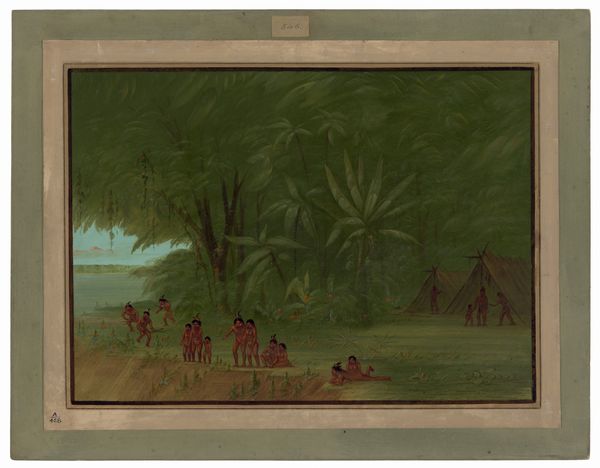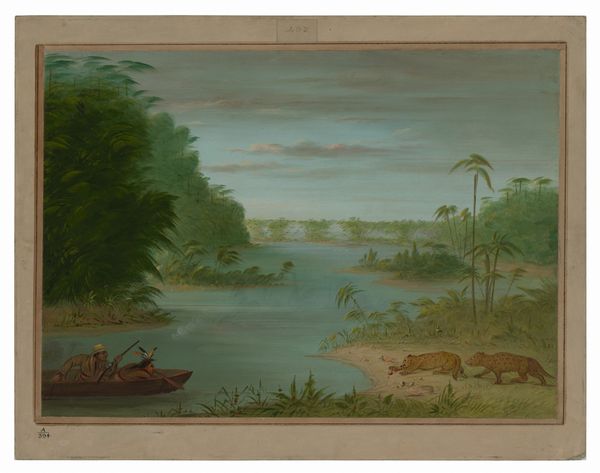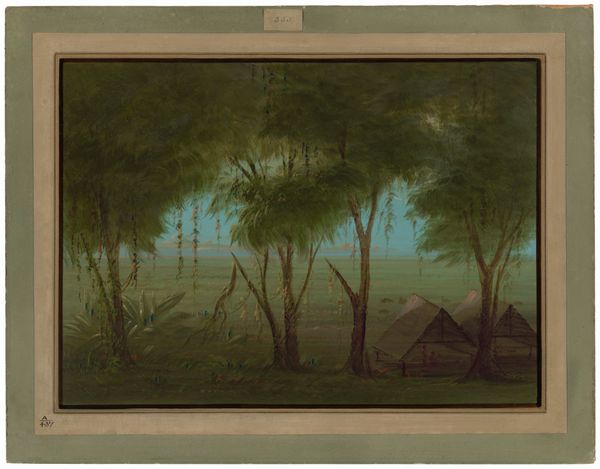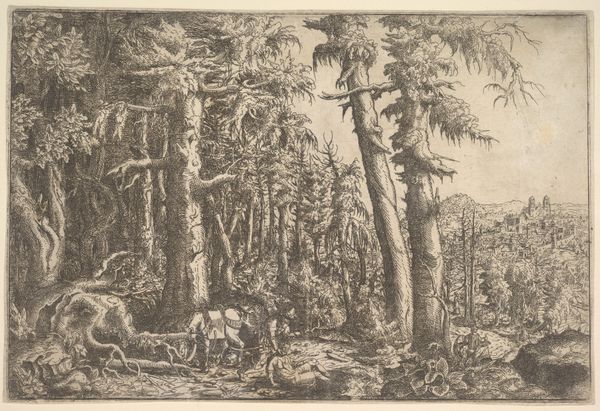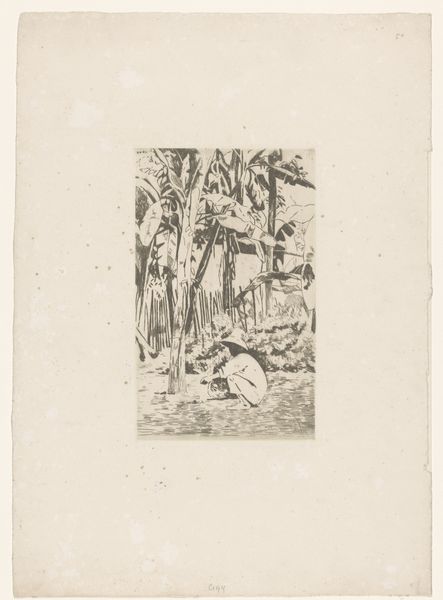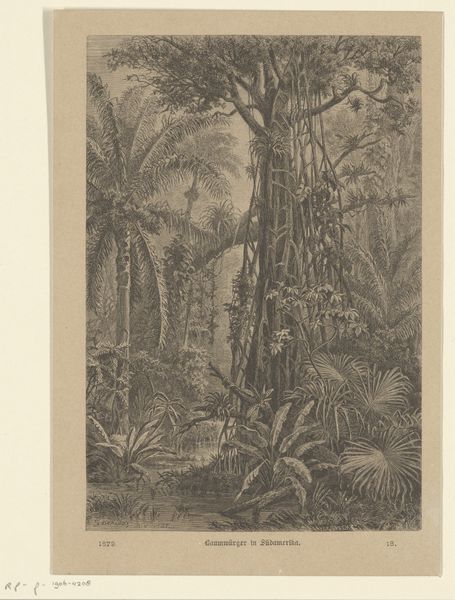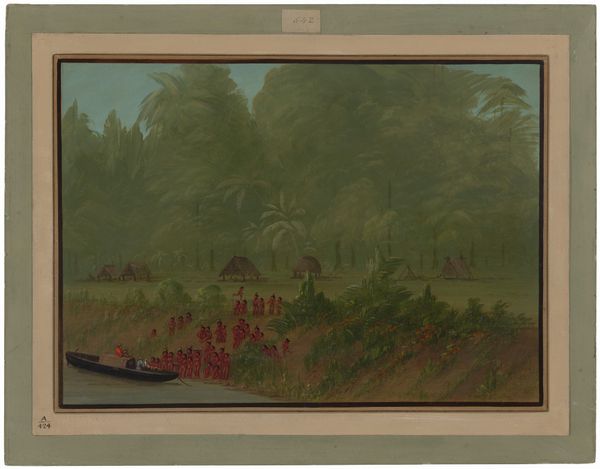
painting
#
water colours
#
narrative-art
#
painting
#
landscape
#
watercolour illustration
#
watercolor
Dimensions: overall: 45.2 x 61 cm (17 13/16 x 24 in.)
Copyright: National Gallery of Art: CC0 1.0
Curator: This is George Catlin's "A Fight with Peccaries - Caribbe," likely completed between 1854 and 1869. It is a watercolor on paper. Editor: It's immediately striking—the density of the peccaries against the hazy, verdant backdrop. The painting evokes a sense of controlled chaos. What I appreciate is the way that Catlin utilizes horizontal bands to construct the image, providing a visual stability in contrast to the potential aggression. Curator: Indeed. Let's look closely at how Catlin positions the figures within that structure. Note how the man standing with the rifle aligns almost vertically with the tree behind, a stabilizing counterweight. And consider what the firearm meant for indigenous people: technology and disruption of life. Editor: Symbolically, peccaries in numerous South American traditions often signify abundance, but also can represent destruction when they mass together, uprooting gardens and cultivated spaces. Observe how they resemble an overflowing river or wave washing against the small group of hunters. Curator: The artist plays with light, specifically focusing our eye. The pale, almost ghostly tree bark near the armed men pulls our vision immediately to them as the instigators, although in visual proximity, we do feel the power that the Indigenous character also displays. Editor: And isn’t it fascinating how Catlin utilizes the figure in the tree—seemingly a watcher, as a symbol of alertness. Catlin places him strategically above the action; his placement is almost sentinel, a silent acknowledgment. We must also look to Catlin's wider output: What did such representations mean in the context of a Western audience hungry for portrayals of exotic landscapes? Curator: Yes, Catlin straddles a fascinating line. On one hand, this work provides valuable ethnographical observation—that can be substantiated by his work alongside Indigenous groups. On the other hand, the exoticization is implicit in the composition’s structure. The Western man with a weapon placed against what can be considered nature unleashed, hinting to potential dominance over nature. Editor: It truly does represent many contrasts. In considering the composition, the iconography and what this image represented during the period in which Catlin made this watercolour and others in the period really allow us a broader cultural reading. Thank you.
Comments
No comments
Be the first to comment and join the conversation on the ultimate creative platform.
